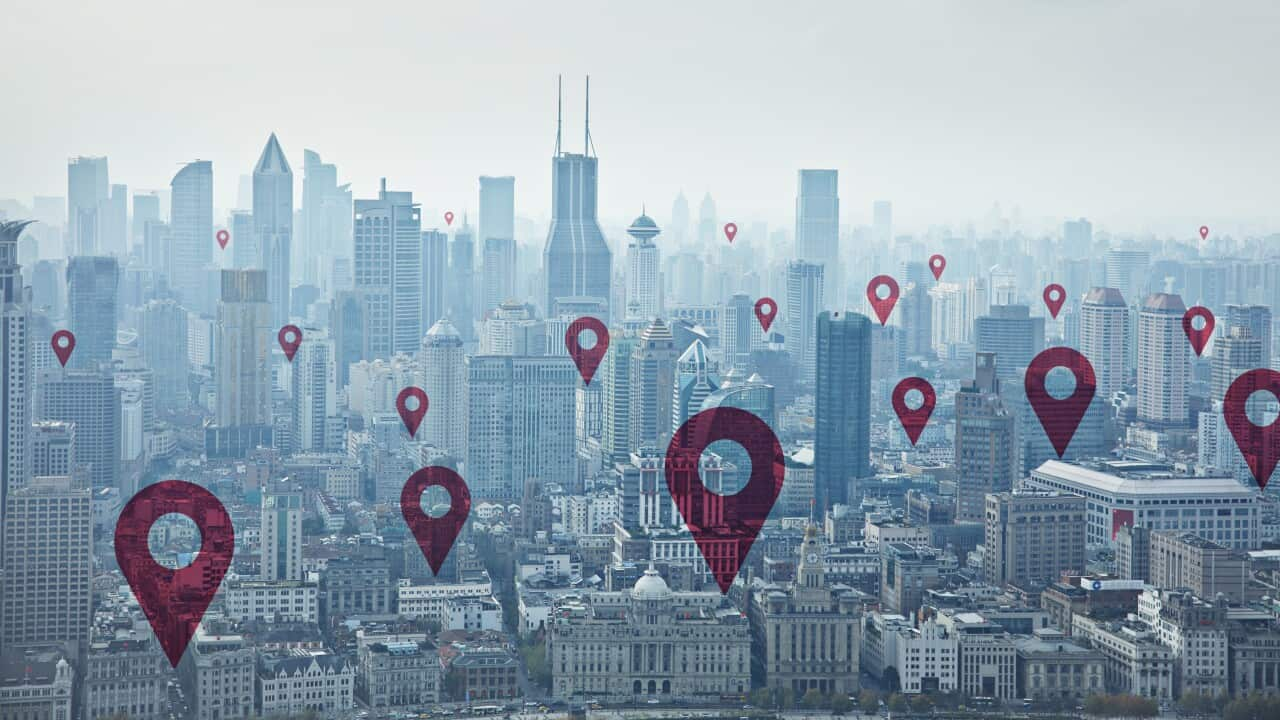Key Points
- Social media has enabled more exchange and communication about our cities and our everyday experiences.
- Governments and companies use location data, hashtags and descriptions to determine what is attractive in a city.
- A researcher says social media shows “slices of moments” and is not necessarily representative of experiences.
The 150m high photo frame in the sky is the result of an architectural competition designed to create an emblem of the “new face for Dubai”.

While it looks like a picture frame, this building in Dubai consists of two towers and a viewing platform. Source: Getty / Katiekk2
Its two parallel towers, linked by a museum building on the ground level and an observation deck at the top, form what appears from a distance to be a giant photo frame.
Tracy Huang, a lecturer in interior architecture at the University of NSW, said the ability of social media users “to capture and record their individual experiences and then share that globally with a vast amount of audiences” made them “participants in the design of our spaces”.
Data-driven planning
“They are leveraging things like the GPS features, your ability to post certain types of content, your hashtags, your description, and they can use image content analysis, geo-location tag analysis to then determine what is attractive in a city,” she said.
Shibuya, Tokyo’s busy commercial centre, is one of the areas of focus for Huang’s research.

Tokyo’s Shibuya commercial centre in Tokyo (pictured) and Sydney’s World Square are the subject of research into social media and the design of spaces. Source: Getty / Atlantide Phototravel
She said many of the main buildings in the area are owned by Tokyo Corporation.
“There is obviously a lot of financial and capital incentives behind how they want to create the spaces to be attractive.”
Influencing how we experience spaces and places
In Bali, as more tourists wait in line to be photographed on rope swings set against picturesque backdrops, natural landscapes are being reshaped by development to cater to these visitors, leading some locals to express concerns.

Pictures of people on the Bali swings abound on social media. Source: Anadolu / Anadolu/Anadolu Agency via Getty Images
For many social media-savvy travellers, a trip to the Indonesian island isn’t complete until a picture of them posing on the iconic swings makes it to the timeline.
But plans to install a 182m-tall glass lift on the cliff top, designed to transport tourists down to the sand, have received mixed reactions from locals.

Photographs of the picturesque landscapes of the Indonesian island of Bali are often posted to social media platforms such as Instagram. Source: Getty / Feature China/Future Publishing
While the lift could improve safety for those who would otherwise navigate the steep slope on foot to the beach and bring financial benefits, some are concerned it could harm the natural environment and attract even more tourists to an island that already hosts thousands of visitors each day.
An Instagrammable toilet
Huang said social media is changing the way we classify spaces and the activities that happen within them.

At Sketch in London, restaurant-goers often make a bee-line for the washroom. Source: Getty / View Pictures/Universal Images Group
“So something like a toilet that is generally very private, right, but through this [egg pod] design, it is something that’s super attractive that people want to take photos of.”
“It’s taken on this sort of digital ecology, and how people are exchanging information online has then also influenced what the space does.”
Huang said one of the theories she was working on was whether “this sort of veil of social media makes people ‘frame a city in a different way'”.
She said there was a concern cities were becoming “homogenous”, where some places were becoming “like a theme park city that’s just been designed for experience”.
Influencing how spaces are created
Huang warned of “the danger” in relying too heavily on social media data when designing public spaces, questioning whether people can truly form an accurate picture of a place from social media posts.
“I don’t believe that is the right approach because people’s relationship with social media, why they post, how they post, and then how they represent cities in the digital sphere doesn’t necessarily represent how good cities should be designed; also it doesn’t represent all the different voices and the narratives within a city.”
Local experience of places
She will oversee a group of students at the two locations who will map their “everyday experiences on the ground versus what the digital representations are”.

Public spaces like World Square in Sydney are being researched to assess how real-world experiences of spaces compare to those derived from data collected through social media posts. Source: Getty / Nina Dermawan/Moment Editorial
“When we actually do our ethnographic studies and immerse ourselves into the space, that’s not necessarily the experience of the space on an everyday basis,” Huang said.
